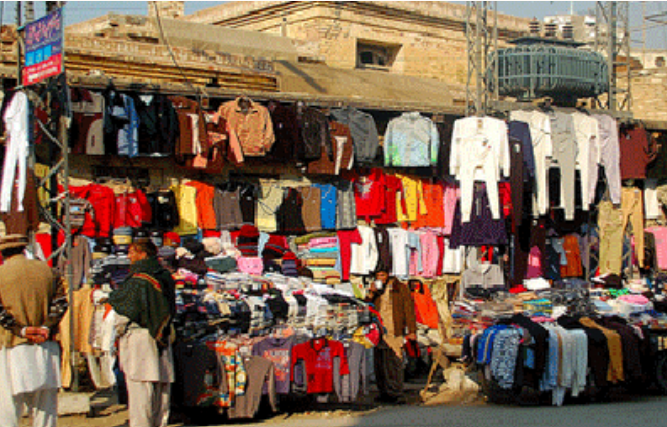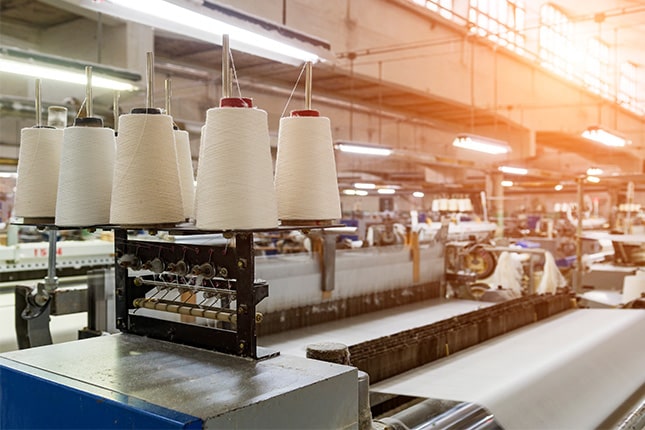Pakistan's textile industry has been a cornerstone of its economy, contributing significantly to foreign exchange earnings and employment generation. However, recent challenges have cast a shadow over textile exports in Pakistan. In August 2023, textile exports of Pakistan experienced a 6% year-on-year decline, falling to $1.48 billion.

This setback can be attributed to high energy costs and a liquidity crunch, factors that have eroded the industry's competitiveness. In this extensive exploration, we will delve deeper into the multifaceted challenges facing Pakistan's textile industry, elucidate potential solutions, and provide actionable strategies for small and medium-sized enterprises (SMEs) to navigate these challenges effectively.
Challenges Faced by Textile Exports of Pakistan
High Energy Costs: Perhaps the most pressing issue confronting the textile industry in Pakistan is the exorbitant energy costs. The continuous rise in electricity and gas prices has significantly inflated production expenses, rendering Pakistani textiles less competitive on the global stage.
Liquidity Crunch: The liquidity crunch is another formidable hurdle plaguing the industry. With interest rates hovering at a staggering 22%, obtaining affordable financing for operations and expansion has become an uphill battle, particularly for SMEs.
Policy Changes: The abrupt withdrawal of the Regionally Competitive Energy Tariff (RECT) and the elimination of the zero-rating facility for the sector have dealt a severe blow to the industry. These policy changes have substantially escalated the cost of doing business for textile manufacturers.
Sales Tax Refunds: Delays in receiving sales tax refunds have added to the industry's woes. These delays have strained the cash flow of textile businesses, hampering their capacity to invest in technology and modernization.
Implementation Challenges: Despite the introduction of Pakistan's Textiles and Apparel Policy 2020-25, which aimed to boost exports through market-driven exchange rates, tariff rationalization, and stable energy supplies at competitive rates, the industry has encountered formidable implementation challenges.
Click Below to Request a Quote for Textile Exports of Pakistan

Opportunities and Strategies for Pakistan Textile Exports
Energy Efficiency: To mitigate the impact of high energy costs, SMEs in the textile sector should consider investing in energy-efficient technologies and practices. Government incentives for adopting such technologies can be explored to make this transition more feasible.
Diversification: Textile businesses can diversify their product range to cater to a broader market. This diversification could involve venturing into value-added products or exploring new export markets, which can reduce their reliance on a single product or market.
Digitalization: Embracing digital technologies can streamline operations, reduce costs, and enhance competitiveness. SMEs should allocate resources to invest in digital solutions for supply chain management, inventory control, and online marketing to stay competitive in the digital age.
Access to Finance: SMEs can explore alternative financing options to overcome the challenges posed by high interest rates and the liquidity crunch. Options such as peer-to-peer lending, venture capital, and industry-specific financing programs can be considered.
Advocacy: Industry associations like the All Pakistan Textile Mills Association (APTMA) should continue to advocate for policy reforms that support the textile sector. Addressing issues related to energy tariffs, tax refunds, and trade facilitation through active engagement with policymakers is crucial.
Export Promotion: SMEs should actively participate in government-led initiatives to promote exports and expand their global reach. Leveraging e-commerce platforms and participating in international trade fairs can help in this regard, enabling SMEs to access a broader customer base.
Skill Development: Investing in workforce skill development is vital to enhance the industry's competitiveness. Training programs and partnerships with educational institutions can ensure that the textile workforce is equipped with the necessary skills for modern production processes.
While Pakistan's textile industry faces significant challenges, it is not without hope. The sector's contribution to the national economy is undeniable, and with strategic measures, it can regain its competitive edge. SMEs, which form the backbone of the industry, can adapt and thrive by investing in energy efficiency, diversifying their product offerings, embracing digitalization, and exploring alternative financing options. Moreover, sustained advocacy for policy reforms and active participation in export promotion initiatives are pivotal in revitalizing the sector.
The ambition of achieving a $25 billion textile export target, set by the government, is challenging but not unattainable. Through concerted efforts, collaboration between industry stakeholders, and a commitment to innovation, Pakistan's textile industry can continue to be a driving force in the country's economic growth and export earnings. It is crucial that both the public and private sectors work hand in hand to ensure the sustainability and resilience of this vital industry.
How to Export Garments from Zaraye in Pakistan?
Exporting garments from Pakistan requires careful planning and adherence to international trade regulations. Entrepreneurs seeking to venture into this lucrative field should consider the following steps:
Market Research: Conduct thorough market research to identify potential export destinations and understand customer preferences.
Compliance and Documentation: Familiarize yourself with export regulations, customs requirements, and other legal aspects of international trade.
Quality Assurance: Maintain strict quality control measures to ensure that your products meet international standards and satisfy customer expectations.
Partnering with Experts: Collaborate with experienced exporters or agents who possess a comprehensive understanding of the global market and can facilitate your entry into new markets.
Export High-Quality Readymade Garments with Zaraye
The readymade garments sector in Pakistan's textile industry holds immense promise for the country's economic growth and international standing. With ongoing governmental support, competitive advantages, and valuable lessons to be learned from successful players like China and Bangladesh, Pakistan is well-positioned to bolster its position in the global market. As entrepreneurs harness the opportunities this sector presents, the future of Pakistan's readymade garments export industry appears brighter than ever.















.png)




